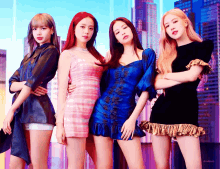Greta Gerwig’s first draft of Barbie features Barbie’s return to the real world walking into a clinic and eagerly crying, in full glam and skirt, “I’m here to see my urologist!
The best way to describe The Barbie Effect is to examine the sum of its contradictory parts: a movie about a children’s toy deliberately targeting an adult audience, a Mattel production whose self-awareness degrades Mattel, a movie about inner beauty starring the most beautiful stars of our age. The positives and negatives drive a fine balance that leaves anyone looking for a fun time with more questions than answers, grasping to decode what to feel.
This, incidentally, is what the movie’s made for. The post-irony, self-reference and meta commentary of Barbie is a reflection of a growing complexity in the way we produce and consume media, bolstered by the internet, of course, but just as much by our ever-present demystification of the power structures that line our lives and pockets.
Women today are empowered, resilient and autonomous, but women today also like pink lace, frilly socks and mirror selfies of cute outfits (It’s only a matter of time until Mattel releases a coquette and clean girl aesthetic Barbie to drive teenage sales home). The ever-growing rift between rejecting the undercurrent of inequality present in society, and feeling gratefullness for the good things in our complicated world can only produce films such as Barbie. At least, it should.
To resolve the inconsistencies baked into the fabric of this movie, I chose three different angles: feminist, trans-inclusive, and marxist. Just like Barbie’s plot and Barbie’s hair are tangled in a complex web, I cannot isolate these lenses from my logical understanding of the movie. As stated, Mattel’s presence as a producer here cannot be overlooked.
In ancient times, before the 3D printer or laser hair removal, selling toys was easy. Gone are the days when a colorful TV commercial or shiny poster on a billboard could capture our collective attention for long enough to make kids glittery-eyed. Nowadays, brands satirize themselves to sell themselves. It’s Hot Pocket’s 17-year-old social media intern shitposting on Twitter all over again. Advertisement is a cunning game that rewards products that seem least like products, and Barbie works so well as an advertisement because it’s designed not to revolve around Barbie.
bot bockets
— Hot Pockets (@hotpockets) June 11, 2018
This is not to say the movie is a two-hour infomercial with a Greta Gerwig stamp of approval, but however way you slice it, the movie starts and ends with Barbie. In this sense, viewers have to be conscious that they are being sold an image, and are complicit in an emerging cultural phenomenon. Even by writing this article, I am inevitably adding to Mattel’s publicity. The CEO characters are perhaps the most evident pawns in this game. Throughout the movie, Will Ferrel’s character and his band of Mattel executives are caricatured and deemed pink tie-wearing laughingstocks. “Look at him, mom” they say, “he can’t even hop over a gate!”
On Fridays we wear pink. #Barbie #Barbenheimer pic.twitter.com/O5o5qBC3cs
— Will Ferrell (@OfficialWilllF) July 21, 2023



The irony that these characters represent the people who run Mattel is thick as frosting and impossible to miss. “How could Mattel do this to itself?” viewers then begin to wonder. Here’s how: they sacrifice their corporate image to glorify their corporate values: Barbie, her inclusivity, and the aspiration that women can be anything they want to be. There’s only one thing that sells more than brand, and that’s concept.
So when Will Ferrel’s character delivers a heavy-handed speech about his jewish friends and Mattel’s only two female CEO’s, the subconscious impulse is to feel relieved by Mattel’s self-consciousness. We all have a friend who’s self-aware about their issues but never seems to fix them, right? Think of Mattel as a slightly woker, ironic version of that friend. That is how Barbie garners gold stars, by hinting at an inclusivity that interferes with its business model. After all, plus-size Barbie dolls will only stay on the market as long as people want to buy them. Mattel’s progressivism is a product, not a commitment. Don’t get me wrong, it’s pleasantly surprising to see a company so openly self-criticized, but it must be taken with a grain of salt that any feminism stemming from this movie comes in a pink Mattel box with a sticker that reads “she’s having the best day!
Level of depression: depressed Barbie https://t.co/j2PMgV9RWe pic.twitter.com/0d0yHfA5Rf
— جِ (@jehan21_) August 10, 2023
That being said, Barbie’s appeal can still coexist with its corporate incubation. For one, the movie’s take on femininity, womanhood and youth leaves a scattered closet’s worth of thought after the cinema lights turn back on. Barbie and Ken undergo metamorphosis after metamorphosis to find their place in the world as their assigned genders.
Barbie learns to reject her inbuilt perfectionism and focus on spiritual fulfillment, Ken learns to have faith in his masculinity divorced from the expense of others. For a movie about perfect dolls, the imperfections of these two characters are what keeps the pink-colored film rolling. One of the highlights is how humorously yet efficiently the idea of healthy masculinity comes across: Ken imports patriarchy into Barbie land, unlocks a newfound power, and is left to grapple with where his influence ends and he begins. His identity crisis at the end of the movie proves that separating subjugation from manhood is the first step for any man to do right by himself. Kenergy is the way to go.
However, being a 21st-century movie for a 21st-century audience, the characters reflect real people as much as they do subcultures. A more extreme version of Ken’s character arc reflects the incel community, men who go as far as basing their masculinity on violence. At the height of Ken’s rule over Barbieland, he sings “Where I see love she sees a friend,” sexually frustrated by Barbie’s lack of reciprocation.
Where he emanates strength the audience sees insecurity, because Ken acts like a [censored] to get the girl. When he comes to terms with reality, he realizes this worldview is unfair not only to himself but to the women around him. The message hidden in the Mojo-Dojo Casa House is that much of toxic masculinity is rooted in the need for validation by women, and the belief that upholding the patriarchy will get them what they want. For a Youtube video essay, this is standard material, even clichè. For a mainstream movie produced by a toy company, however, it crosses the border into groundbreaking territory, since this treatment is usually delegated to women: insecure and hiding behind facades to garner male attention.
Just like Ken can never be complete without Barbie, neither can Barbie be complete without Ken. On the flip side of the coin, the film is equally sensitive to the intricacies of maturing into womanhood. Pink, idealized Barbieland is how every little girl (according to Mattel) would like to imagine the world.
Growing up is crossing the threshold into real life (or Los Angeles for short), and losing your grip on that beautiful pink innocence. Once you learn that life for women is “literally impossible”, as America Ferrera’s character claims, you can never go back. You watch as the men around you start treating you differently, the women start competing for their attention, and your inner child grows fainter and duller.
The best of the Barbie movie was Weird Barbie, the ad for depressed Barbie watching Pride and Prejudice and Ken radio playing Matchbox 20. I said what I said. pic.twitter.com/VVpDSp8KcU
— ⛥☽𝔈𝔩𝔢𝔫𝔞☾⛥ (@eerielena) July 23, 2023
Watching the movie as a trans woman, this evolution took on even more strata of complexity. Barbieland is simultaneously the naive wonder of girlhood and a strange hidden world young trans women are barred from entering. Its gloss and glam might not represent the femininity all of us seek to embody, but it does romanticize the call to girlhood, the desire to pursue and explore it.
Unfortunately, the challenges of being socialized male sometimes incentivize us to repress, reject or even mock this side of womanhood. It is only when entering the real world, by taking the red-pilled Sandal and choosing to present femme for the first time, that we experience the difference between real and imagined womanhood. So, in growing to reconcile these two realities we draw from the women we know and love, just as Barbie regains her footing with the help of her best friends (and Photoshop). Most of us having missed out on a traditional female youth, we find solace in the guidance of female connections. These are eventually the mothers, sisters, cousins and friends that we take with us into the theater.
Ultimately, drop a trans woman into a Barbie screening and you’re guaranteed smeared mascara by the end. What undeniably works about this movie is how many women it brings together in one place at one time, its celebration of the marvel and fierceness of womanhood, the unadulterated joys and highs and lows and sparkling palette of emotions and realities. A million shades of woman, under one roof, mirrored on the same silver screen.
The sincerity of its emotional execution almost makes you forget that Barbie is a vessel for Mattel shareholders or that the entire cast of Sex Education has somehow infiltrated the corners of the frame. When Billie’s “What was I made for?” shatters to a climax, and the montage flickers over Barbie’s aging eyes, and you look around to see the women next to you caught in a whirlpool of crying, smiling and living, you become just what the movie wants you to be (aside from a devout Toys R Us visitor).
You just feel. You just sit and you just feel.











.png)


